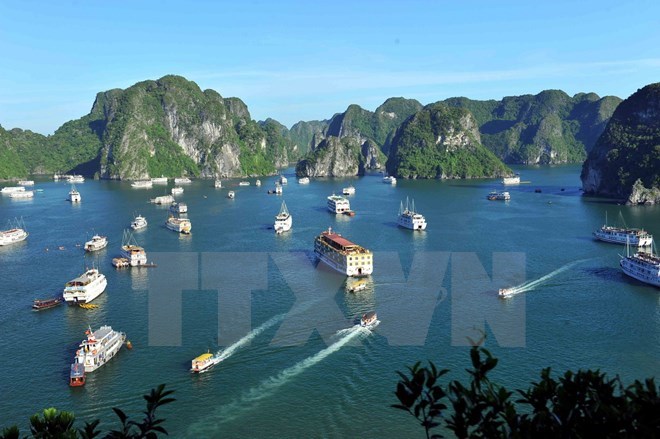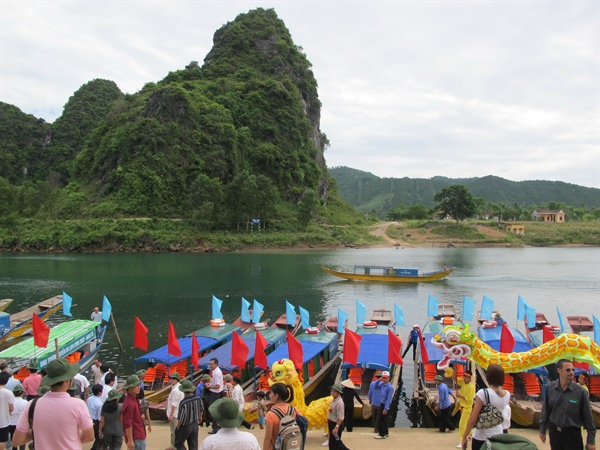According to UNESCO and many of the world’s countries, the tangible and intangible cultural heritages of all nations are seen as ‘special properties’ of human civilisation with are of great value and should be promoted over time.

Ha Long Bay welcomed 3.6 million visitors in 2017
Heritages are considered as inexhaustible and irreplaceable assets that can be exploited continually over successive generations. Therefore, if heritages are effectively utilised and promoted, they will bring tremendous worth to the country.
Impressive numbers
Among the 25 Vietnamese heritages honoured by UNESCO, there are eight cultural and natural treasures. Vietnam is proud to be one of the richest countries for heritage in Asia.
Over the past years, Vietnam has enhanced the communication and promotion of the country’s precious world natural and cultural heritages to attract more visitors. Through tourism activities, the heritage sites have positively contributed to the socio-economic development of the country in general and their localities in particular.
In 2017, world cultural and natural heritage sites in Vietnam attracted 15.76 million visitors, including over 6.5 million foreigners, to earn a total turnover of around VND1.5 trillion (US$65.7 million). Specifically, Ha Long Bay in Quang Ninh province and Trang An Landscape Complex in Ninh Binh welcomed 3.6 million and nearly 6.1 million visitors, respectively. Meanwhile, Hue Imperial Citadel in Thua Thien –Hue province received around three million tourists, of which 1.8 million were international visitors. In addition, Phong Nha – Ke Bang National Park in Quang Binh province, Hoi An ancient town and My Son Sanctuary in Quang Nam recorded impressive numbers of visitors.
Measures to preserve and promote heritage values
Many world heritages in Vietnam are facing numerous challenges due to the pressures applied from rapid economic development. Two years ago, land encroachment on the seas around Ha Long Bay for the construction of tourist resorts and urban areas caused mixed emotions. In 2017, the opening of tourism services in caves, rock mining, and fishing in the heritage area continued to suggest that Ha Long was in the control of its famed UNESCO status.

Phong Nha - Ke Bang National Park was recognised by UNESCO as a world natural heritage.
In addition, a project to build a cable car system leading to Son Doong Cave in Quang Binh province faced a negative reaction from the public. Last year, the pilot tour in Phong Nha - Ke Bang National Park did not receive the consent of organisations, scientists, and researchers.
Moreover, with its extremely abundant natural resources, Phong Nha – Ke Bang National Park has become a gold mine for illegal resource extraction. The task of preserving the heritage locations requires the convergent efforts from many agencies in addition to the cultural sector. The overlapping management of localities is a barrier to implementing this task.
A note of worry is the fact that the World Heritage Committee (WHC) has repeatedly given recommendations for tourism development projects in the national park as well as for the management and conservation status of the Trang An Landscape Complex and Ha Long Bay from 2014 to 2017.
Vietnam has presented reports, in which commitments have been made to preserve and promote the value of the nation’s heritage sites. However, at the 41st Decision in 2017, the WHC continued to voice their deep concern over the management and conservation at the Phong Nha – Ke Bang National park. In November 2017, the WHC and the International Union for Conservation of Nature (IUCN) sent a note to Vietnam informing the country that a delegation of international experts are to carry out a field study at the park in April 2018.
It is time for the country to seriously implement its commitments related to the preservation of heritage sites that have been recognised by UNESCO. In addition to the role of localities which are homes to such heritages, the oversight and management of central agencies is very crucial. In addition, it is also essential to complete the legal documents as well as clearly decentralise in the management of heritage sites. It is hoped that by taking drastic measures, the world heritage sites, the priceless gifts from nature and the nation’s forefathers, will be sustainably protected and their values will be preserved for all future generations.